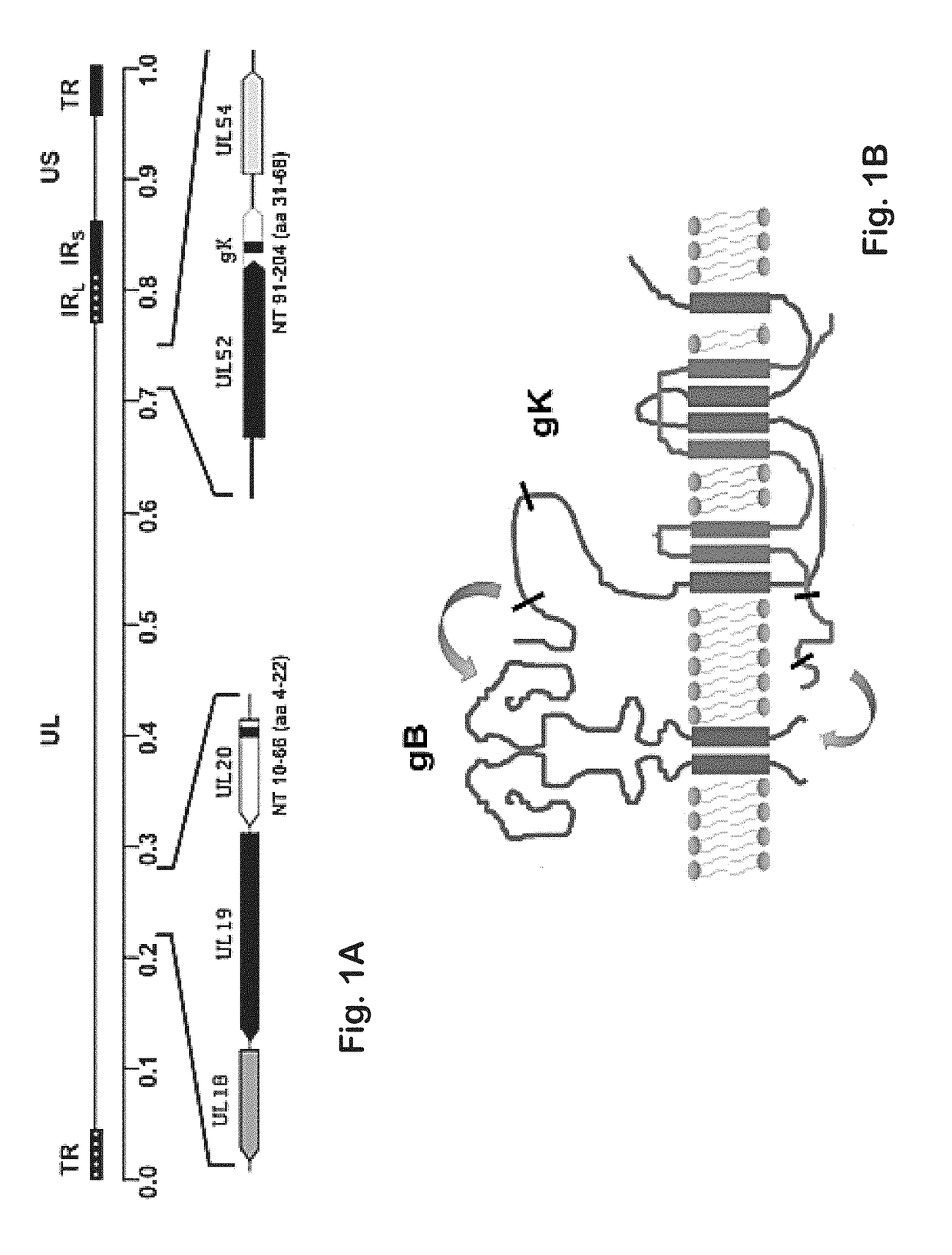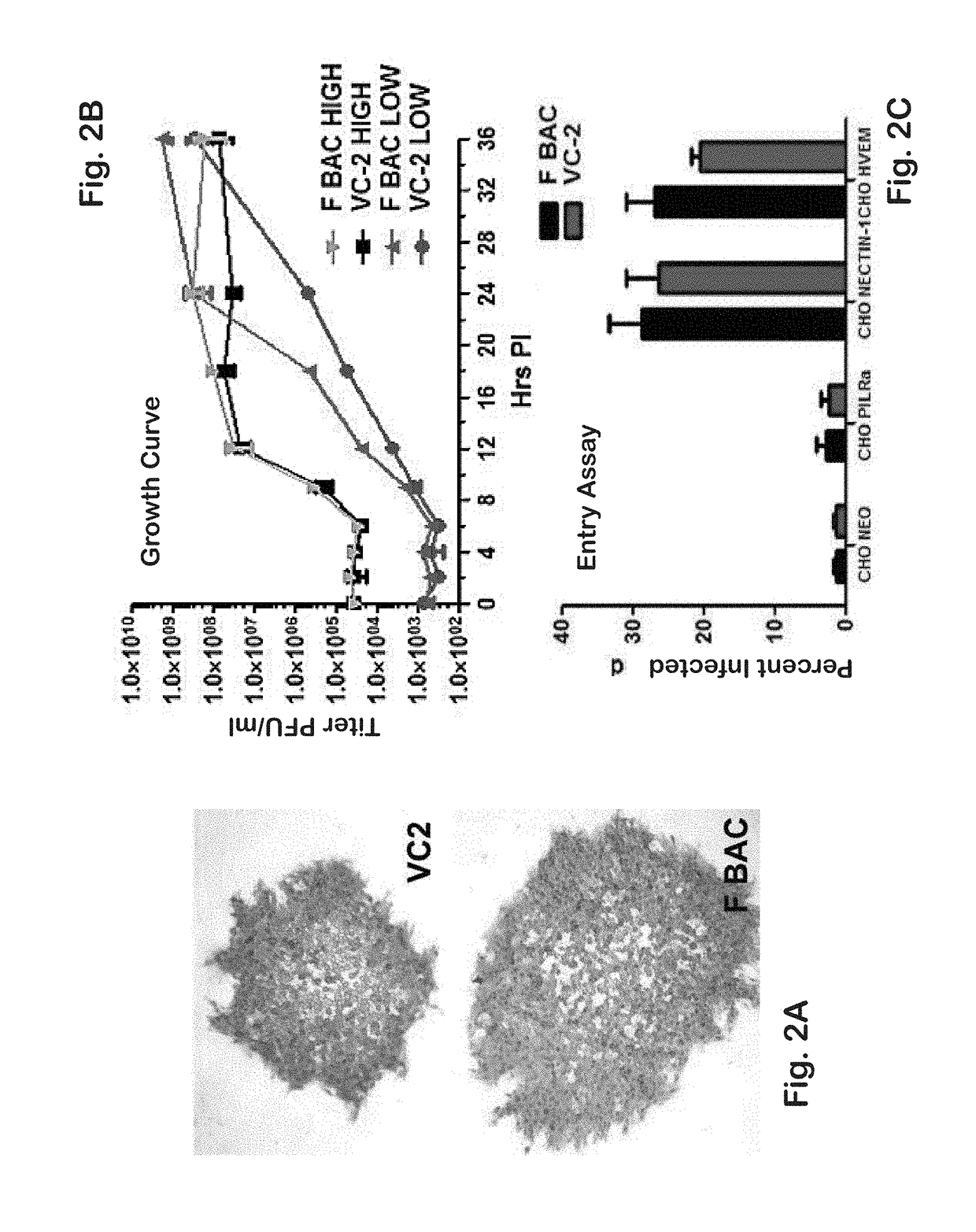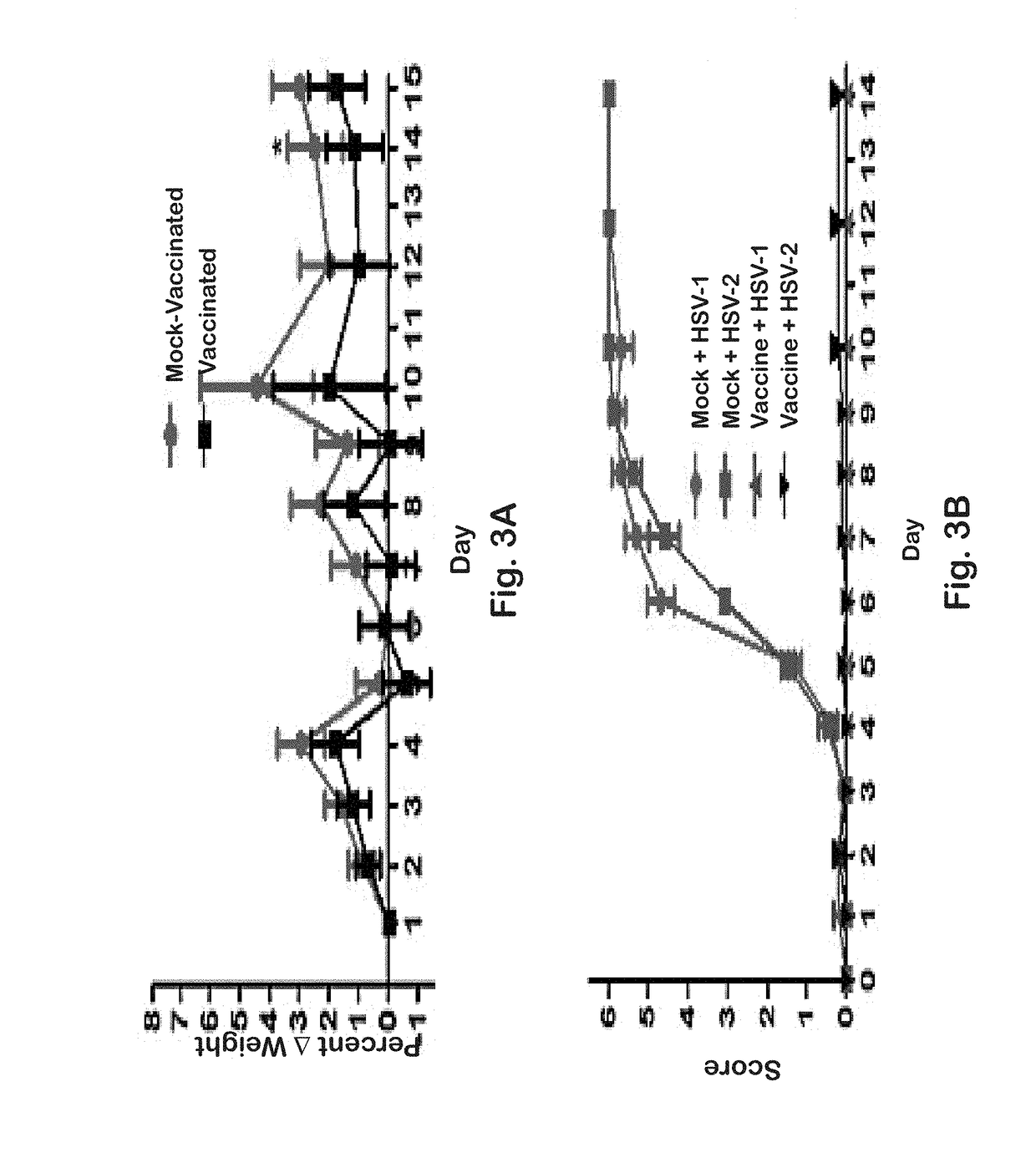Vaccines against genital herpes simplex infections
a technology for herpes simplex and vaccines, applied in the field of vaccines for treating or preventing herpes simplex virus infection, can solve the problems of high global prevalence and disease burden of genital herpes
- Summary
- Abstract
- Description
- Claims
- Application Information
AI Technical Summary
Benefits of technology
Problems solved by technology
Method used
Image
Examples
example 1
nt of an Attenuated Herpes Simplex Virus Vaccine
[0142]Previously, it was shown that a gK-null virus was unable to infect ganglionic neurons and establish latency after ocular infection of mice (David et al. (2008) Curr. Eye Res. 33:455-467; David et al. (2012) MBio 3:e00144-00112). It was further shown that intramuscular vaccination of mice with the attenuated gK-null virus conferred significant cellular immune responses and protection against intravaginal challenge of mice with either virulent HSV-1 (McKrae) or HSV-2(G) viruses (Iyer et al. (2013) Virol. J. 10:317). To further improve on this vaccination approach, the VC2 mutant virus of the present invention was constructed. The VC2 mutation virus has specific deletions within the genes coding for glycoprotein K (gK) and UL20. The VC2 virus contains the gKΔ31-68 mutation that prevents the virus from infecting ganglionic neurons after ocular infection in mice (Saied et al. K G. (2014) Curr. Eye Res. 39:596-603). In contrast to the ...
example 2
-68 Mutation Prevents HSV Entry in Neuronal Axons
[0180]Recently, a novel assay was developed for the assessment of virion entry into cytoplasm of cells by adapting the proximity ligation assay (PLA) (Jarvius et al. (2007) Mol. Cell. Proteomics 6:1500-1509; Soderberg et al. (2006) Nat. Methods 3:995-1000; Soderberg et al. (2008) Methods 45:227-232). PLA has been extensively utilized to determine whether two different proteins colocalize and likely interact in the cytoplasm of cells. PLA is performed by first attaching specific antibodies to the two proteins of interest, and then attaching to these primary antibodies two secondary antibodies covalently linked with a short DNA primer. When the two primers are in close proximity to each other, they can interact with two other circle-forming primers that are added later. Enzymatic ligation of these two fluorescently-labeled oligonucleotides followed by polymerase-dependent rolling circle amplification result in the generation of intense ...
PUM
| Property | Measurement | Unit |
|---|---|---|
| volume | aaaaa | aaaaa |
| volume | aaaaa | aaaaa |
| volume | aaaaa | aaaaa |
Abstract
Description
Claims
Application Information
 Login to View More
Login to View More - R&D
- Intellectual Property
- Life Sciences
- Materials
- Tech Scout
- Unparalleled Data Quality
- Higher Quality Content
- 60% Fewer Hallucinations
Browse by: Latest US Patents, China's latest patents, Technical Efficacy Thesaurus, Application Domain, Technology Topic, Popular Technical Reports.
© 2025 PatSnap. All rights reserved.Legal|Privacy policy|Modern Slavery Act Transparency Statement|Sitemap|About US| Contact US: help@patsnap.com



